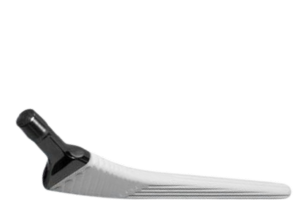
Plasma-Sprayed HA Coatings


SEM pictures of the HA sprayed surface
Technology
DOT applies the plasma sprayed HA coating to the implants using the APS technique.
Range of Application
- Joint implants: hip joint, knee joint, ankle joint, shoulder joint, wrist joint, finger implants and spinal implants
Advantages of the Procedure
- Surface enlargement
- High primary stability of the implant due to rough surface
- Long-time stability due to bone ingrowth into the porous HA layer
Properties
- Coating thickness: On Customer Request
- Adhesion (tensile strength) ASTM F1147: ≥ 15MPa
- Adhesion (shear tensile strength) ASTM F1044: ≥ 15 MPa
- Ca/P ratio: 1.61–1.76
- Degree of crystallinity of HA phase: ≥ 45 %
- Crystalline phases:
- HA: 50 w%
- a-TCP, ß-TCP, TTCP: ≤ 30 w%
- CaO: ≤ 5 w%


 EN
EN  DE
DE 